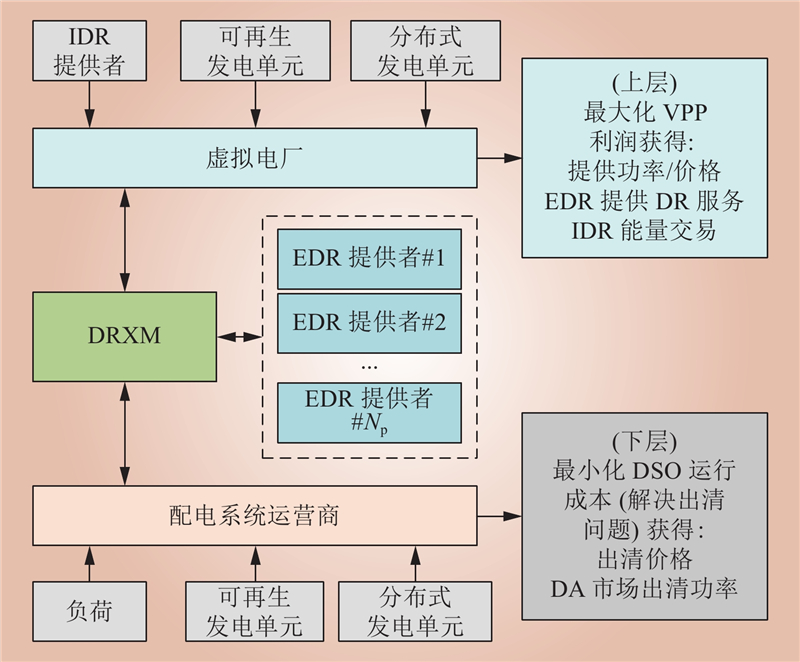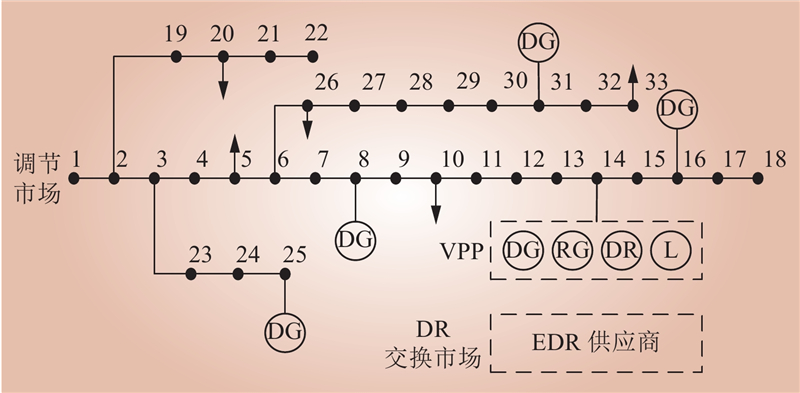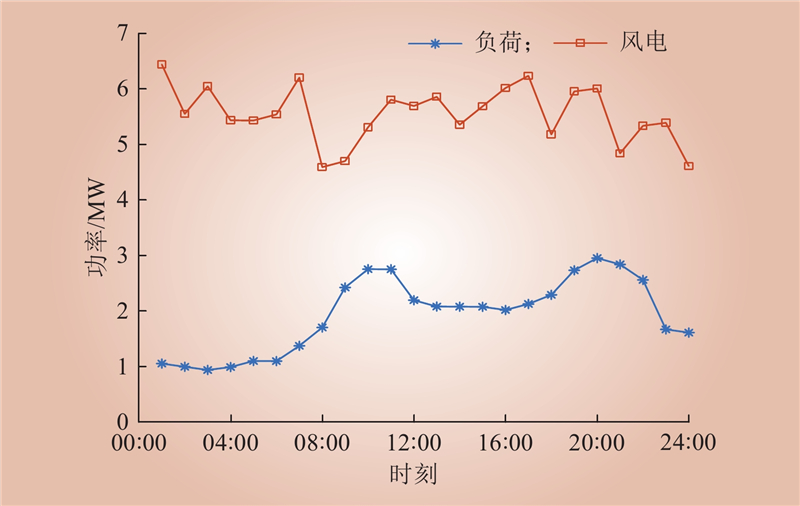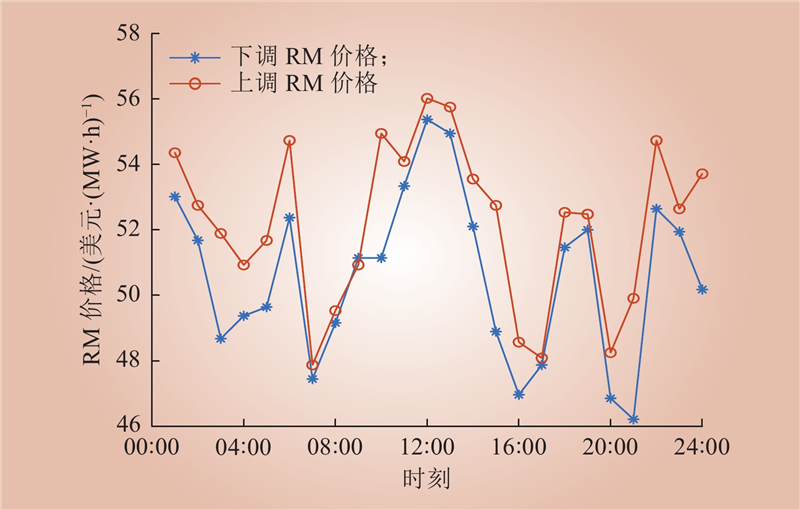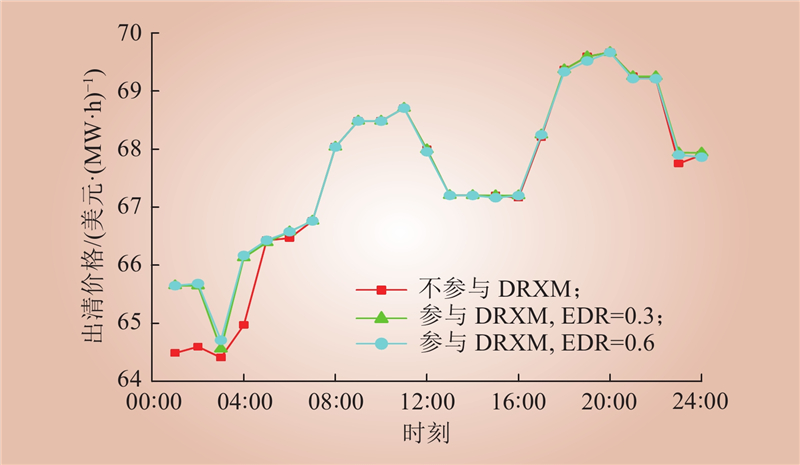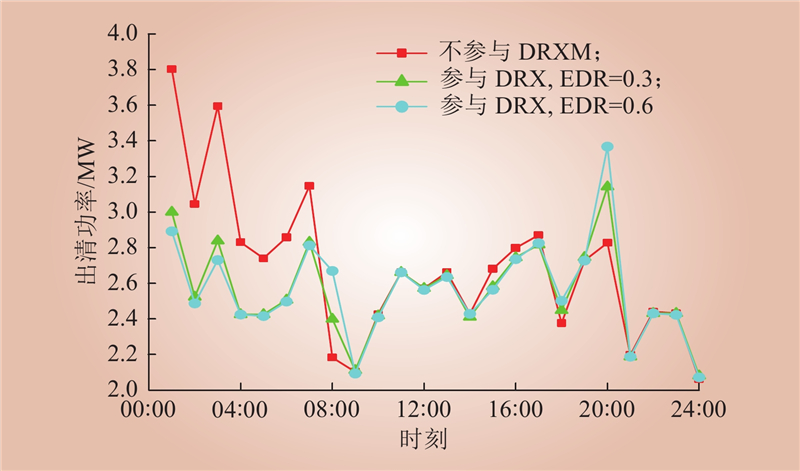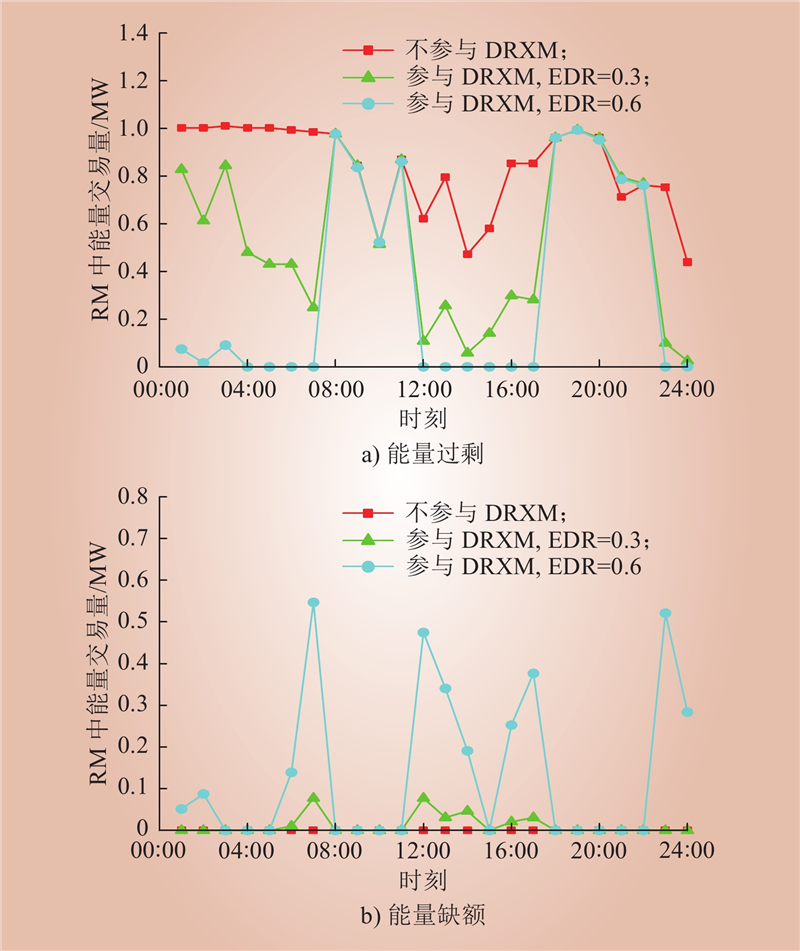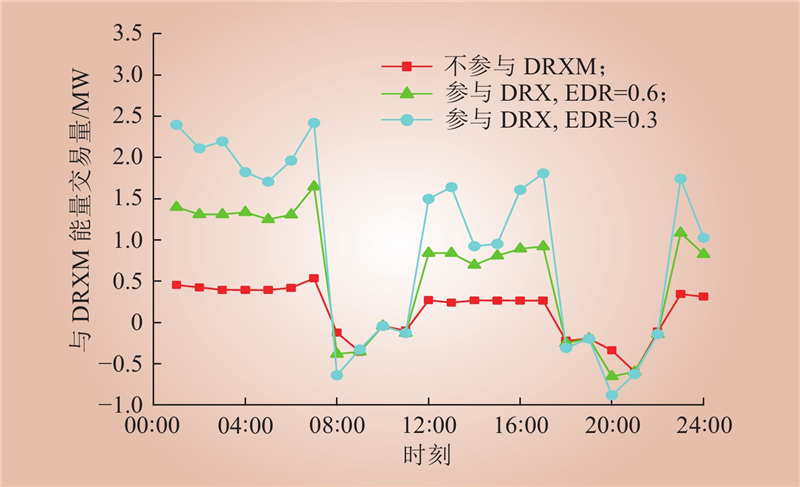| 1 |
徐峰, 何宇俊, 李建标, 等. 考虑需求响应的虚拟电厂商业机制研究综述[J]. 电力需求侧管理, 2019, 21 (3): 2- 6.
DOI
|
|
XU Feng, HE Yujun, LI Jianbiao, et al. Review of research on commercial mechanism for virtual power plant considering demand response[J]. Power Demand Side Management, 2019, 21 (3): 2- 6.
DOI
|
| 2 |
李志伟, 隋旭光, 车铭, 等. 基于虚拟发电厂的火电机组厂级负荷两级分配方法研究[J]. 东北电力大学学报, 2023, 43 (5): 12- 17.
|
|
LI Zhiwei, SUI Xuguang, CHE Ming, et al. Research on two-level distribution method of plant-level load for thermal power unit based on virtual power plant[J]. Journal of Northeast Electric Power University, 2023, 43 (5): 12- 17.
|
| 3 |
刘雨佳, 樊艳芳. 计及5G基站储能和技术节能措施的虚拟电厂调度优化策略[J]. 电力系统及其自动化学报, 2022, 34 (1): 8- 15.
DOI
|
|
LIU Yujia, FAN Yanfang. Optimal scheduling strategy for virtual power plant considering 5G base station technology, energy-storage, and energy-saving measures[J]. Proceedings of the CSU-EPSA, 2022, 34 (1): 8- 15.
DOI
|
| 4 |
谭洪, 颜伟, 王浩. 基于建筑物热能流分析的沼–风–光孤立微能网优化调度模型[J]. 电网技术, 2020, 44 (7): 2483- 2492.
|
|
TAN Hong, YAN Wei, WANG Hao. Optimal dispatch model of biogas-wind-solar isolated multi-energy micro-grid based on thermal energy flow analysis of buildings[J]. Power System Technology, 2020, 44 (7): 2483- 2492.
|
| 5 |
汪洋叶, 赵力航, 常伟光, 等. 基于模型预测控制的虚拟电厂储能系统能量协同优化调控方法[J]. 智慧电力, 2021, 49 (7): 16- 22.
DOI
|
|
WANG Yangye, ZHAO Lihang, CHANG Weiguang, et al. Model predictive control based energy collaborative optimization control method for energy storage system of virtual power plant[J]. Smart Power, 2021, 49 (7): 16- 22.
DOI
|
| 6 |
王世龙, 宋双商, 林清华, 等. 计及分布式储能的虚拟电厂优化调度[J]. 可再生能源, 2019, 37 (8): 1214- 1219.
DOI
|
|
WANG Shilong, SONG Shuangshang, LIN Qinghua, et al. Virtual power plant optimal scheduling considering distributed energy storage[J]. Renewable Energy Resources, 2019, 37 (8): 1214- 1219.
DOI
|
| 7 |
严干贵, 贾希浩, 王玉鹏, 等. 动态响应误差驱动的风机并网变流器控制参数辨识方法[J]. 东北电力大学学报, 2023, 43 (3): 1- 8, 101.
|
|
YAN Gangui, JIA Xihao, WANG Yupeng, et al. Control parameter identification method of wind turbine grid-connected converter driven by dynamic response error[J]. Journal of Northeast Electric Power University, 2023, 43 (3): 1- 8, 101.
|
| 8 |
席佳铭, 孙亮, 葛沛然, 等. 考虑电热需求响应的光热-电热综合能源系统源荷协调经济调度[J]. 东北电力大学学报, 2023, 43 (3): 61- 71.
|
|
XI Jiaming, SUN Liang, GE Peiran, et al. Source-charge coordinated economic dispatching of photothermal-electrothermal integrated energy system considering electric heating demand response[J]. Journal of Northeast Electric Power University, 2023, 43 (3): 61- 71.
|
| 9 |
于凤娇, 王典, 李润宇. 计及需求侧响应的分布式电源并网优化策略[J]. 东北电力大学学报, 2022, 42 (2): 92- 103.
|
|
YU Fengjiao, WANG Dian, LI Runyu. Optimization strategy for grid connection of distributed generation considering demand side response[J]. Journal of Northeast Electric Power University, 2022, 42 (2): 92- 103.
|
| 10 |
魏震波, 张海涛, 魏平桉, 等. 考虑动态激励型需求响应的微电网两阶段优化调度[J]. 电力系统保护与控制, 2021, 49 (19): 1- 10.
DOI
|
|
WEI Zhenbo, ZHANG Haitao, WEI Ping'an, et al. Two-stage optimal dispatching for microgrid considering dynamic incentive-based demand response[J]. Power System Protection and Control, 2021, 49 (19): 1- 10.
DOI
|
| 11 |
张智, 陈艳波, 刘芳, 等. 计及运行风险和需求响应的两阶段鲁棒机组组合模型[J]. 中国电机工程学报, 2021, 41 (3): 961- 973.
|
|
ZHANG Zhi, CHEN Yanbo, LIU Fang, et al. Two-stage robust unit commitment model considering operation risk and demand response[J]. Proceedings of the CSEE, 2021, 41 (3): 961- 973.
|
| 12 |
赵力航, 常伟光, 杨敏, 等. 电力市场环境下虚拟电厂两阶段能量经济优化调度[J]. 中国电力, 2022, 55 (10): 14- 22.
|
|
ZHAO Lihang, CHANG Weiguang, YANG Min, et al. Two-stage energy economic optimal dispatch of virtual power plant in deregulated electricity market[J]. Electric Power, 2022, 55 (10): 14- 22.
|
| 13 |
刘起兴, 胡亚平, 许丹莉, 等. 计及综合能源服务商调节域的综合需求响应市场机制[J]. 电网技术, 2021, 45 (5): 1932- 1941.
DOI
|
|
LIU Qixing, HU Yaping, XU Danli, et al. Integrated demand response market mechanism considering adjustable region of integrated energy service providers[J]. Power System Technology, 2021, 45 (5): 1932- 1941.
DOI
|
| 14 |
YAZDANI-DAMAVANDI M, NEYESTANI N, SHAFIE-KHAH M, et al. Strategic behavior of multi-energy players in electricity markets as aggregators of demand side resources using a Bi-level approach[J]. IEEE Transactions on Power Systems, 2018, 33 (1): 397- 411.
DOI
|
| 15 |
谭鸣骢, 王玲玲, 蒋传文, 等. 考虑负荷聚合商调节潜力的需求响应双层优化模型[J]. 中国电力, 2022, 55 (10): 32- 44.
|
|
TAN Mingcong, WANG Lingling, JIANG Chuanwen, et al. Bi-level optimization model of demand response considering regulation potential of load aggregator[J]. Electric Power, 2022, 55 (10): 32- 44.
|
| 16 |
李春燕, 陈骁, 张鹏, 等. 计及风电功率预测误差的需求响应多时间尺度优化调度[J]. 电网技术, 2018, 42 (2): 487- 494.
DOI
|
|
LI Chunyan, CHEN Xiao, ZHANG Peng, et al. Multi-time-scale demand response dispatch considering wind power forecast error[J]. Power System Technology, 2018, 42 (2): 487- 494.
DOI
|
| 17 |
MAHMOUDI N, SAHA T K, EGHBAL M. Demand response application by strategic wind power producers[J]. IEEE Transactions on Power Systems, 2016, 31 (2): 1227- 1237.
DOI
|
| 18 |
ASENSIO M, CONTRERAS J. Risk-constrained optimal bidding strategy for pairing of wind and demand response resources[J]. IEEE Transactions on Smart Grid, 2017, 8 (1): 200- 208.
DOI
|
| 19 |
何奇琳, 艾芊. 售电侧放开环境下含需求响应虚拟电厂的电力市场竞价策略[J]. 电力建设, 2019, 40 (2): 1- 10.
DOI
|
|
HE Qilin, AI Qian. Bidding strategy of electricity market including virtual power plant considering demand response under retail power market deregulation[J]. Electric Power Construction, 2019, 40 (2): 1- 10.
DOI
|
| 20 |
高明, 曾平良, 李亚楼, 等. 考虑需求侧响应的虚拟电厂优化调度[J]. 电力科学与工程, 2020, 36 (11): 45- 52.
DOI
|
|
GAO Ming, ZENG Pingliang, LI Yalou, et al. Optimal scheduling of virtual power plants considering demand-side response[J]. Electric Power Science and Engineering, 2020, 36 (11): 45- 52.
DOI
|
| 21 |
王晛, 张凯, 张少华. 风电参与投标的日前电力市场与需求响应交易市场联合均衡分析[J]. 中国电机工程学报, 2018, 38 (19): 5738- 5750.
DOI
|
|
WANG Xian, ZHANG Kai, ZHANG Shaohua. Joint equilibrium analysis of power market and demand response trading market before wind power participates in bidding[J]. Proceedings of the CSEE, 2018, 38 (19): 5738- 5750.
DOI
|
| 22 |
NGUYEN H T, LE L B, WANG Z Y. A bidding strategy for virtual power plants with the intraday demand response exchange market using the stochastic programming[J]. IEEE Transactions on Industry Applications, 2018, 54 (4): 3044- 3055.
DOI
|
| 23 |
赵冬梅, 郭育村, 郑亚锐. 考虑需求响应的虚拟电厂两阶段市场竞标模型[J]. 现代电力, 2023, 40 (2): 182- 191.
DOI
|
|
ZHAO Dongmei, GUO Yucun, ZHENG Yarui. Two-stage market bidding model of virtual power plant considering demand response[J]. Modern Electric Power, 2023, 40 (2): 182- 191.
DOI
|
| 24 |
RASHIDIZADEH-KERMANI H, VAHEDIPOUR-DAHRAIE M, SHAFIE-KHAH M, et al. A regret-based stochastic Bi-level framework for scheduling of DR aggregator under uncertainties[J]. IEEE Transactions on Smart Grid, 2020, 11 (4): 3171- 3184.
DOI
|
| 25 |
YI Z K, XU Y L, ZHOU J G, et al. Bi-level programming for optimal operation of an active distribution network with multiple virtual power plants[J]. IEEE Transactions on Sustainable Energy, 2020, 11 (4): 2855- 2869.
DOI
|


